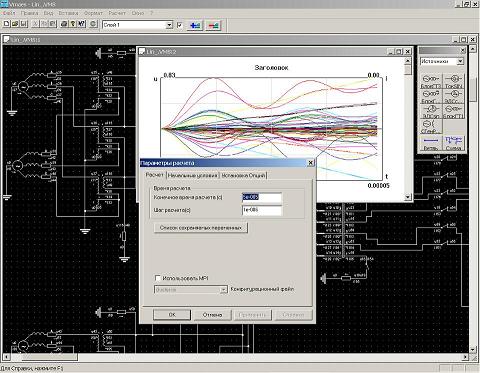
Digital Electromagnetic Model of the Power System: Parallel Implementation for Multicomputers
The organizations contributing
to MAES project are:
Siberian Research Institute of Power Engineering,
RAO EES
Institute of Computational Mathematics and
Mathematical Geophysics, Russian Academy of Sciences

Due to the considerable progress in computer techniques,
many practical problems of current importance can now be resolved.
Implementation of cluster systems and SMP computers, using the parallel
programming makes it possible to set and solve the problem of creation
of real-time electric system simulators.
A digital electromagnetic model of an electric system is needed
for the following purposes:
1. To perform computational experiments when
- designing electric networks for electric power transmission;
- choosing basic electric equipment and its parameters, choosing overcurrent and overvoltage protection circuits,
- developing operation measures and procedures to ensure proper reliability of supplying power to consumer.
In this case the numerical electromagnetic model of the electric
network operates as a part of Designer's Automated Module.
2. To perform simulation experiments when
- testing existing electric devices and experimentally studying
new ones, including digital relay protection devices and anti-damage
automatics,
- designing, testing and implementing SCADA-systems.
In this case the numerical electromagnetic model of the electric
network operates as a part of a firmware complex (bench testing
unit). Benches make it possible to avoid expensive physical models
of the power system and reduce the number of even more expensive
actual tests, maintaining high efficiency of the work performed
and achieving better reliability and objectivity of the results.
To this line also belongs the use of a digital electromagnetic model
for simulation and analysis of the scenarios of emergencies within
automated information-controlling systems and simulators.
3. Development of program-organized managing actions within control
and automation systems.
Solving the problems listed in point 1 practically does not impose
any restrictions on the computation speed, while solving the problems
in points 2 and 3 sets tight restrictions on the time of obtaining
the solution. The latter problems must be solved in real time, which
can be achieved by parallel algorithm and using multiprocessor computers.
Publications
- V.Malyshkin, I.Naumkin, N.Malyshkin, V.Korneev, M.Ostapkevich. Digital Electromagnetic Model of the Power System: Parallel Implementation for Multicomputers. - In Proceedings of the Fourth International Conference on Parallel Computing in Electrical Engineering. (PARELEC 2004). The Fourth Workshop on System Design Automation, SDA2004 University of Technology Dresden, Germany, September 7-10, 2004, pp. 380-386.